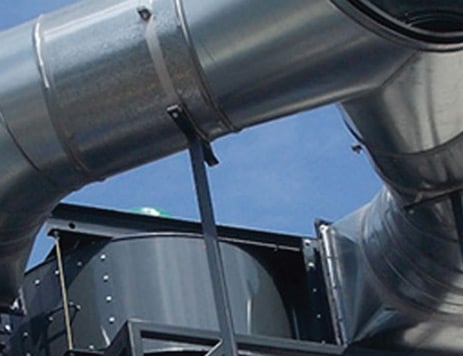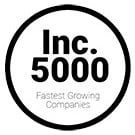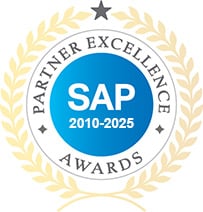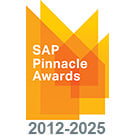
UNLOCK POTENTIAL
SAP Business One
Cloud Migration
Scale and innovate faster, enhance resiliency and security, and reduce infrastructure costs.
Connect With Sales
Receive a response within one business day. To speak with us now, use our live chat.
GET FUTURE-READY
Simplifying Your SAP Business One Migration to the Cloud

Thinking about migrating your on-premises SAP Business One instance to the cloud?
Vision33’s high-performing cloud solutions for SAP Business One deliver the same capabilities and features as on-premises but are more affordable, more secure, and fully managed.
Our best-in-class cloud architecture and 24/7 support protect your business from risk. Let Vision33's SAP cloud migration consultants take care of everything so you can focus on running your business.
RELY ON OUR TEAM
SAP Business One Cloud Hosting Packages
Public Cloud for SAP Business One
Includes:
- Annual ERP and infrastructure upgrades
- Performance guarantee
- Single sign-on
Plus:
- Hosting
- Multi-factor authentication and password compliance
- 24/7 system health monitoring
- 24/7 security monitoring
- 24/7 infrastructure support
- Unlimited support tickets
- Daily backups
- OS patching & system maintenance
- 24/7 ERP support (optional)
- And more
Private Cloud for SAP Business One
Includes:
- Highly customizable solution
- Infrastructure upgrades (every 3 years)
- Performance guarantee
Plus:
- Hosting
- Multi-factor authentication and password compliance
- 24/7 system health monitoring
- 24/7 security monitoring
- 24/7 infrastructure support
- Unlimited support tickets
- Daily backups
- OS patching and system maintenance
- 24/7 ERP support (optional)
- And more
TRUSTED, EXPERIENCED, GLOBAL
Make Vision33 Your Partner
CLOUD LEADER
Unparalleled Expertise in Cloud Migration
As the first SAP Business One partner recognized by AWS for technical proficiency in implementing, migrating, monitoring, and maintaining SAP Business One on AWS cloud, Vision33 is the best SAP cloud migration provider you can work with.
- 12,000+ users rely on Vision33 every day to host their SAP Business One environment
- Vision33 has used its proven methodology to migrate hundreds of on-premises SAP Business One deployments to the cloud
- We have 20+ years of SAP Business One experience and extensive, multidisciplinary knowledge to tackle any migration scenario


END-TO-END SERVICES
Fully Managed & Supported
Benefit from premium technologies and services that protect, optimize, and support your SAP Business One solution.
- Rely on Vision33 to take care of everything from patching to system health and security monitoring
- You’ll feel supported from the moment you go live with unlimited support tickets, fast resolution times, regular OS and security patching, and end user training
- Our certified experts optimize system performance and protect your business from downtime and data loss
HIGH VALUE
More for Your Dollar
With Vision33’s cloud solutions, there are no hidden costs or complex à la carte price lists. Payments are predictable, affordable, and can be monthly, quarterly, or annually.
- Enjoy quick time-to-value
- Lower your total cost of ownership
- Eliminate the tedious maintenance of keeping your software and infrastructure up to date


HIGHLY SECURE
Protection for Your Biggest Asset
Protect your ERP system and data from threats—and get back up and running quickly if an incident does occur—with Vision33’s multi-tier, highly secure cloud architecture.
- 24/7 system health and security monitoring
- Daily backups and machine images
- Multi-factor authentication and advanced encryption
Ready to Transform Your Business?
Make Vision33 your partner for success.
MEASURABLE OUTCOMES
Case Studies
See how Vision33 has helped organizations like yours.
HERCO
Aero Precision
Audeze




Manufacturing
Audeze Luxury Headphones Manufacturer Doubles Revenue in One Year With SAP Business One
Read Now >LEARN MORE
Frequently Asked Questions
What is cloud-hosted ERP?
Cloud-hosted ERP means your ERP solution is hosted on a vendor’s server instead of a server in your office.
What are the benefits of cloud-hosted versus on-premises?
Why should I choose Vision33 for cloud hosting services?
What are some security features of cloud-hosted ERP?
What hosting packages does Vision33 offer?
Public Cloud for SAP Business One includes regular ERP & infrastructure upgrades, performance guarantees, and single sign-on. Explore this package >
Private Cloud for SAP Business One includes a highly customizable solution, infrastructure upgrades every 3 years, and performance guarantees. Explore this package >
Both packages include hosting, multi-factor authentication, 24/7 system health and security monitoring, 24/7 infrastructure support, unlimited support tickets, daily backups, OS patching, system maintenance, password management, and more.
Which industries does Vision33 provide cloud-hosted ERP for?
Ready to Transform Your Business?
Make Vision33 your partner for success.
INDUSTRY ACCOLADES
Awards & Recognition








